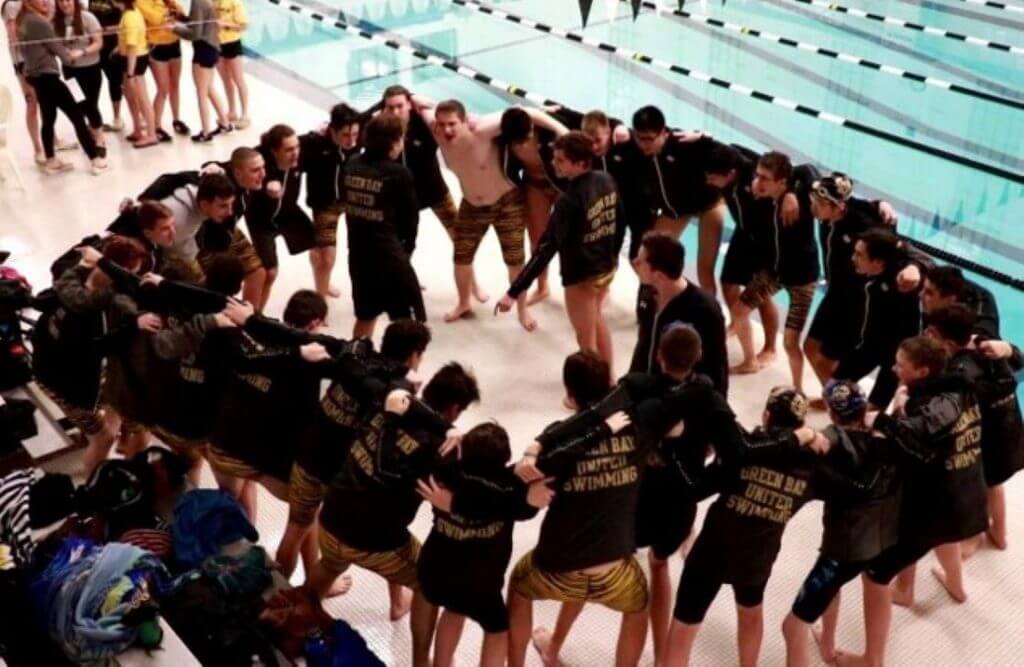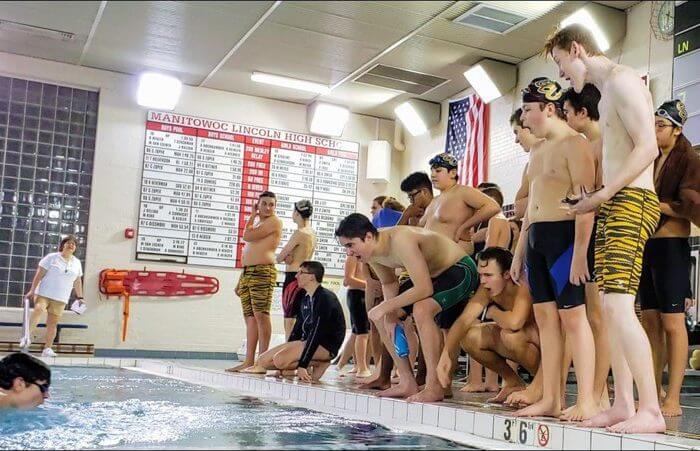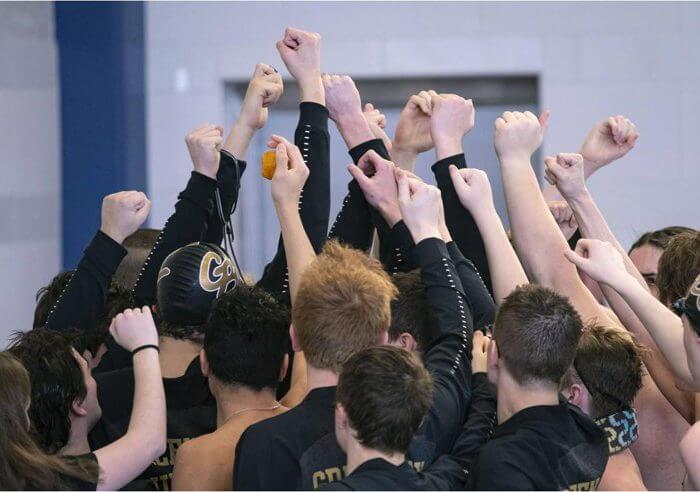Overcoming Obstacles to Make Swimming Accessible to All

Overcoming Obstacles to Make Swimming Accessible to All
As all swimmers can attest, our sport poses all sorts of challenges: early mornings, freezing cold water, sets of the utmost difficulty, and even simply finding the time to fit a workout into the day. What many may not realize, however, is that having to face these challenges at all is a privilege.
For some students, swimming is not easily accessible. It requires the right equipment, access to a pool, time commitment, and if you want to take it to the next level, membership to a club team of some sort. But these requirements come with a price tag attached, and some students have underlying obstacles that can limit their opportunities to make these investments.
In the Green Bay Area Public School District, there are four high schools (East, West, Southwest, and Preble) that combine into a single swim team, “Green Bay United.” While the group aims to draw student-athletes from all four schools, it has been a significant challenge to bring about this balance, especially considering that all activities are hosted at one school, Green Bay Southwest High School. When asked about this lack of balance, Green Bay United Head Coach, Tom Capelle, cited several reasons.
“Our biggest issue is that Green Bay will not provide transportation from the other schools to Southwest, leaving transportation up to the students, which pretty much stops a lot of the students from joining,” Capelle said.
Budget limitations are reported as the reason for not offering transportation.
Another issue that comes with the lack of transportation is the extreme cold associated with Wisconsin winters. Many students lack access to a car to drive if they have a driver’s license at all. Although some students in this situation may catch a ride with a friend who has transportation, this isn’t an option for everyone. Another route could be taxis and other rideshare services like Uber and Lyft, but all of these options are expensive. And while Green Bay does offer city bussing, the bus schedule often does not line up with swim practice or school schedules. This leaves the option of walking for those within walking range, but when freezing temperatures strike, this option is no longer viable.
As Capelle noted: “A few years ago we had a lot of kids from East High School who wanted to join the team, and for a while, we had about a dozen guys… who wanted to come to learn how to swim. We gave them suits, equipment, and then once it got cold, they stopped coming. They would end up walking as a group to Southwest, which became too much of a difficulty to bear once it gets to be winter.” Even when the weather was manageable, they would arrive significantly late to practice due to the distance.

Photo Courtesy: Peter Martin
Touching upon commitment-based obstacles that potentially interested swimmers face, former Green Bay United assistant coach Carol Chow said: “…Our students often are working or they’re helping take care of their siblings, and they perhaps didn’t have the exposure to swimming when they were young. You have to be exposed to it, you have to have money to swim… without this exposure at a young age, they just don’t build.”
Green Bay United Assistant Coach Terry Kreuser stressed the importance of finding a way to help people who are financially limited get the chance to swim at a young age to see if they have an interest in it. This could potentially help foster and build that talent without money being as much of an impeding factor.
“The fact that Green Bay doesn’t have much of a program that low-income kids can get into and build is detrimental,” Capelle said. “The (YMCA) program and local club programs are priced so that families are going to have to struggle to keep their kids in the program.”
Financial assistance opportunities are limited and only go so far.
The coaches have found that the most effective way to recruit new swimmers is for current ones to get their friends to join. While it has been a significant challenge to draw students from all four schools to come out to swim, GBU has a few consistent recruitment strategies.
“I’ve been in contact with the athletic directors and principals at all of the schools, put out flyers, and tried to find ways to talk to the students,” said Capelle. “The persistent problem, though, is that if we can’t find a way to transport people over, we’re back to ground zero.”
Coaches Chow and Kreuser, both teachers at east side K-8 schools, note: “the biggest thing is that you have to have a few swimmers so they can push to get more friends to come out and try it. Not having swimmers at East and West means that students are unable to see other people with success in the pool, which is critical.”
Speaking of past students who faced roadblocks to joining, Capelle stated: “We’ve had some really good kids through the years who probably could’ve done just fine, but between family, transportation issues, as well as grades, it’s really difficult.”
Kreuser noted the importance of providing a higher level of support as well.
“You have to change your coaching style,” Kreuser said. “You have to be flexible because with kids who happen to be socioeconomically challenged. Often, their family comes first at all costs, and if they don’t make practice for a week, you have to realize that they may have more going on than you might think.”
Another way to help provide opportunities for lower-income swimmers is through fundraising, which can help provide swimmers access to necessary equipment. Also, the high school booster clubs can provide funds to address the needs of specific students so they can participate in the sport.
Chow noted that giving out workouts allows swimmers who can’t afford a club or Y membership to work out together and stay motivated, which helps a lot. The team has also managed to find ways to help swimmers to stay in shape in the offseason if they don’t have access to club team training.

Photo Courtesy: Peter Martin
Every student who participates in the sport of swimming deserves a positive, welcoming experience. As a result, maintaining a healthy team culture must be prioritized. In the Green Bay Area Public School District, students come from a wide variety of backgrounds, not just socioeconomic but also cultural. This reality means that team leadership must be proactive in their work to foster a positive, welcoming team environment for all.
With such a diverse population, Capelle pointed out that: “Occasionally you’ll have people say (culturally) insensitive things, and when it does, you really have to stomp it out… Fortunately, it hasn’t been too bad for us because we’ve had some responsible captains that handle issues.”
Language is another barrier to consider, as English is a second language for a number of Green Bay area students.
A clear advantage of having a team with a wide variety of abilities and backgrounds is that the entire team can really grow and learn from each other. Some kids will join for the competition, others to spend time with friends, or as Capelle mentioned, some will join to overcome their fear of water or to simply learn how to swim.
All students with an interest in swimming deserve to be able to do so without barriers. By addressing obstacles to sport accessibility, we can give more students the opportunity to swim and have a great experience.



